| Listing 1 - 10 of 14 | << page >> |
Sort by
|
Book
ISBN: 9783834897220 9783834806765 3834806765 3834897221 Year: 2010 Publisher: Wiesbaden : Vieweg+Teubner Verlag : Imprint: Vieweg+Teubner Verlag,
Abstract | Keywords | Export | Availability | Bookmark
 Loading...
Loading...Choose an application
- Reference Manager
- EndNote
- RefWorks (Direct export to RefWorks)
This book introduces the reader to modern algebraic geometry. It presents Grothendieck's technically demanding language of schemes that is the basis of the most important developments in the last fifty years within this area. A systematic treatment and motivation of the theory is emphasized, using concrete examples to illustrate its usefulness. Several examples from the realm of Hilbert modular surfaces and of determinantal varieties are used methodically to discuss the covered techniques. Thus the reader experiences that the further development of the theory yields an ever better understanding of these fascinating objects. The text is complemented by many exercises that serve to check the comprehension of the text, treat further examples, or give an outlook on further results. The volume at hand is an introduction to schemes. To get startet, it requires only basic knowledge in abstract algebra and topology. Essential facts from commutative algebra are assembled in an appendix. It will be complemented by a second volume on the cohomology of schemes. Prevarieties - Spectrum of a Ring - Schemes - Fiber products - Schemes over fields - Local properties of schemes - Quasi-coherent modules - Representable functors - Separated morphisms - Finiteness Conditions - Vector bundles - Affine and proper morphisms - Projective morphisms - Flat morphisms and dimension - One-dimensional schemes - Examples Prof. Dr. Ulrich Görtz, Institute of Experimental Mathematics, University Duisburg-Essen Prof. Dr. Torsten Wedhorn, Department of Mathematics, University of Paderborn.
Mathematics. --- Algebra. --- Mathématiques --- Algèbre --- Géométrie algébrique --- Geometric geometry. --- Geometry, algebraic. --- Algebraic Geometry. --- Mathematics --- Mathematical analysis --- Algebraic geometry --- Geometry --- Geometry, Algebraic. --- Schemes (Algebraic geometry) --- Geometry, Algebraic --- Algebraic geometry.
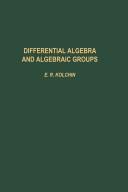
ISBN: 012417650X 9780080873695 0080873693 1281766534 9781281766533 9786611766535 6611766537 9780124176508 Year: 1973 Volume: 54 Publisher: New York : Academic Press,
Abstract | Keywords | Export | Availability | Bookmark
 Loading...
Loading...Choose an application
- Reference Manager
- EndNote
- RefWorks (Direct export to RefWorks)
Differential Algebra & Algebraic Groups
Group theory --- Ordered algebraic structures --- Algèbre différentielle. --- Differential algebra --- Differential algebra. --- Linear algebraic groups. --- Algebraic groups, Linear --- Geometry, Algebraic --- Algebraic varieties --- Algebra, Differential --- Differential fields --- Algebraic fields --- Differential equations --- Algèbre différentielle --- Geometrie algebrique --- Schemas de groupes --- Groupes algebriques

ISBN: 9780521709835 0521709830 9780511800443 0511800444 9781107367920 1107367921 9781107363014 1107363012 1316087662 1107369843 1299409172 1107365465 Year: 2007 Volume: 345 Publisher: Cambridge ; New York : Cambridge University Press,
Abstract | Keywords | Export | Availability | Bookmark
 Loading...
Loading...Choose an application
- Reference Manager
- EndNote
- RefWorks (Direct export to RefWorks)
This textbook, for an undergraduate course in modern algebraic geometry, recognizes that the typical undergraduate curriculum contains a great deal of analysis and, by contrast, little algebra. Because of this imbalance, it seems most natural to present algebraic geometry by highlighting the way it connects algebra and analysis; the average student will probably be more familiar and more comfortable with the analytic component. The book therefore focuses on Serre's GAGA theorem, which perhaps best encapsulates the link between algebra and analysis. GAGA provides the unifying theme of the book: we develop enough of the modern machinery of algebraic geometry to be able to give an essentially complete proof, at a level accessible to undergraduates throughout. The book is based on a course which the author has taught, twice, at the Australian National University.
Geometry, Algebraic --- Geometry, Analytic --- Géométrie algébrique --- Géométrie analytique --- Géométrie algébrique --- Géométrie analytique --- Geometry, Algebraic. --- Geometry, Analytic. --- Analytical geometry --- Algebra --- Conic sections --- Algebraic geometry --- Geometry --- Graphic methods
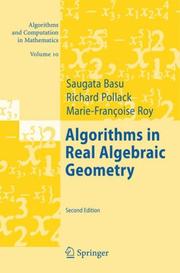
ISBN: 3540330992 3540330984 3642069649 9783540330981 Year: 2006 Publisher: Berlin, Heidelberg : Springer Berlin Heidelberg : Imprint: Springer,
Abstract | Keywords | Export | Availability | Bookmark
 Loading...
Loading...Choose an application
- Reference Manager
- EndNote
- RefWorks (Direct export to RefWorks)
The algorithmic problems of real algebraic geometry such as real root counting, deciding the existence of solutions of systems of polynomial equations and inequalities, finding global maxima or deciding whether two points belong in the same connected component of a semi-algebraic set appear frequently in many areas of science and engineering. In this first-ever graduate textbook on the algorithmic aspects of real algebraic geometry, the main ideas and techniques presented form a coherent and rich body of knowledge, linked to many areas of mathematics and computing. Mathematicians already aware of real algebraic geometry will find relevant information about the algorithmic aspects, and researchers in computer science and engineering will find the required mathematical background. Being self-contained the book is accessible to graduate students and even, for invaluable parts of it, to undergraduate students. This revised second edition contains several recent results, notably on discriminants of symmetric matrices, real root isolation, global optimization, quantitative results on semi-algebraic sets and the first single exponential algorithm computing their first Betti number. An index of notation has also been added.
Mathematics. --- Computer science --- Algebraic geometry. --- Algorithms. --- Algebraic Geometry. --- Symbolic and Algebraic Manipulation. --- Algorism --- Algebra --- Arithmetic --- Algebraic geometry --- Geometry --- Computer mathematics --- Discrete mathematics --- Electronic data processing --- Math --- Science --- Foundations --- Mathematics --- Geometry, algebraic. --- Data processing. --- Geometry, Algebraic --- Computer science—Mathematics. --- Géométrie algébrique --- Algorithmes. --- Informatique. --- Géométrie algébrique --- Geometry, Algebraic.
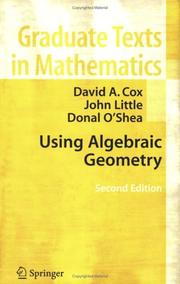
ISBN: 0387207066 0387207333 1489987479 0387271058 Year: 2005 Volume: 185 Publisher: New York, NY : Springer New York : Imprint: Springer,
Abstract | Keywords | Export | Availability | Bookmark
 Loading...
Loading...Choose an application
- Reference Manager
- EndNote
- RefWorks (Direct export to RefWorks)
In recent years, the discovery of new algorithms for dealing with polynomial equations, coupled with their implementation on fast inexpensive computers, has sparked a minor revolution in the study and practice of algebraic geometry. These algorithmic methods have also given rise to some exciting new applications of algebraic geometry. This book illustrates the many uses of algebraic geometry, highlighting some of the more recent applications of Gröbner bases and resultants. The book is written for nonspecialists and for readers with a diverse range of backgrounds. It assumes knowledge of the material covered in a standard undergraduate course in abstract algebra, and it would help to have some previous exposure to Gröbner bases. The book does not assume the reader is familiar with more advanced concepts such as modules. For the new edition, the authors have added a unified discussion of how matrices can be used to specify monomial orders; a revised presentation of the Mora normal form algorithm; two sections discussing the Gröbner fan of an ideal and the Gröbner Walk basis conversion algorithm; and a new chapter on the theory of order domains, associated codes, and the Berlekamp-Massey-Sakata decoding algorithm. They have also updated the references, improved some of the proofs, and corrected typographical errors. David Cox is Professor of Mathematics at Amherst College. John Little is Professor of Mathematics at College of the Holy Cross. Dona l O’Shea is the Elizabeth T. Kennan Professor of Mathematics and Dean of Faculty at Mt. Holyoke College. These authors also co-wrote the immensely successful book, Ideals, Varieties, and Algorithms.
Geometry, Algebraic. --- Géométrie algébrique --- Geometry, Algebraic --- Geometry --- Mathematics --- Physical Sciences & Mathematics --- Géométrie algébrique --- EPUB-LIV-FT LIVMATHE SPRINGER-B --- Algebraic geometry --- Mathematics. --- Computer science --- Algebraic geometry. --- Algorithms. --- Algebraic Geometry. --- Symbolic and Algebraic Manipulation. --- Geometry, algebraic. --- Algebra --- Data processing. --- Algorism --- Arithmetic --- Foundations --- Computer science—Mathematics. --- Computer mathematics --- Electronic data processing

ISBN: 9783540691372 3540691375 3540691413 Year: 2007 Publisher: Berlin, Heidelberg : Springer Berlin Heidelberg : Imprint: Springer,
Abstract | Keywords | Export | Availability | Bookmark
 Loading...
Loading...Choose an application
- Reference Manager
- EndNote
- RefWorks (Direct export to RefWorks)
Cet ouvrage est consacré à l'arithmétique des surfaces fibrées en courbes de genre 1 au-dessus de la droite projective, et à l'arithmétique des intersections de deux quadriques dans l'espace projectif. Swinnerton-Dyer introduisit en 1993 une technique permettant d'étudier les points rationnels des pinceaux de courbes de genre 1. La première moitié de l'ouvrage reprend et développe cette technique ainsi que ses généralisations ultérieures. La seconde moitié, qui repose sur la première, porte sur les surfaces de del Pezzo de degré 4 et sur les intersections de deux quadriques de dimension supérieure; les résultats annoncés dans [C. R. Math. Acad. Sci. Paris 342 (2006), no. 4, 223--227] y sont démontrés. This research monograph focuses on the arithmetic, over number fields, of surfaces fibred into curves of genus 1 over the projective line, and of intersections of two quadrics in projective space. The first half contains a complete account of the technique initiated by Swinnerton-Dyer in 1993 for studying rational points on pencils of curves of genus 1, while incorporating and generalising most of its subsequent refinements. The second half, which builds upon the first, is devoted to quartic del Pezzo surfaces and higher-dimensional intersections of two quadrics. It culminates in the proof of the results announced in [C. R. Math. Acad. Sci. Paris 342 (2006), no. 4, 223--227].
Algebraïsche meetkunde. --- Diofantische analyse. --- Quartic surfaces. --- Quadrics. --- Matrix pencils. --- Geometry, Algebraic. --- Surfaces quartiques --- Géométrie algébrique --- Electronic books. -- local. --- Geometry. --- Algebra --- Geometry --- Mathematics --- Physical Sciences & Mathematics --- Algebraic geometry --- Mathematics. --- Algebraic geometry. --- Number theory. --- Number Theory. --- Algebraic Geometry. --- Number study --- Numbers, Theory of --- Math --- Science --- Euclid's Elements --- Geometry, algebraic.
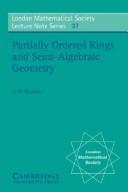
ISBN: 1139883801 110736583X 1107370566 1107360927 1107369940 1299403646 1107363373 051189192X 0511721536 9781107360921 9780511891922 052122845X 9780521228459 9780511721533 Year: 1979 Volume: 37 Publisher: Cambridge [Eng.] ; New York : Cambridge University Press,
Abstract | Keywords | Export | Availability | Bookmark
 Loading...
Loading...Choose an application
- Reference Manager
- EndNote
- RefWorks (Direct export to RefWorks)
The purpose of this unique book is to establish purely algebraic foundations for the development of certain parts of topology. Some topologists seek to understand geometric properties of solutions to finite systems of equations or inequalities and configurations which in some sense actually occur in the real world. Others study spaces constructed more abstractly using infinite limit processes. Their goal is to determine just how similar or different these abstract spaces are from those which are finitely described. However, as topology is usually taught, even the first, more concrete type of problem is approached using the language and methods of the second type. Professor Brumfiel's thesis is that this is unnecessary and, in fact, misleading philosophically. He develops a type of algebra, partially ordered rings, in which it makes sense to talk about solutions of equations and inequalities and to compare geometrically the resulting spaces. The importance of this approach is primarily that it clarifies the sort of geometrical questions one wants to ask and answer about those spaces which might have physical significance.
Categories (Mathematics) --- Commutative rings. --- Rings (Algebra) --- Category theory (Mathematics) --- Algebra, Homological --- Algebra, Universal --- Group theory --- Logic, Symbolic and mathematical --- Topology --- Functor theory --- Commutative rings --- 512.7 --- 512.7 Algebraic geometry. Commutative rings and algebras --- Algebraic geometry. Commutative rings and algebras --- Categories (Mathematics). --- Ordered algebraic structures --- Algebraic geometry --- Anneaux commutatifs --- Catégories (Mathématiques) --- Anneaux (algèbre) --- Géométrie algébrique --- Structures algébriques ordonnées
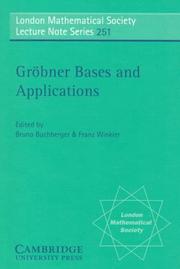
ISBN: 113988543X 1107365147 1107362695 1107367603 110737216X 1107369355 0511565844 9781107362697 9780511565847 0521632986 9780521632980 Year: 1998 Publisher: Cambridge, U.K. ; New York : Cambridge University Press,
Abstract | Keywords | Export | Availability | Bookmark
 Loading...
Loading...Choose an application
- Reference Manager
- EndNote
- RefWorks (Direct export to RefWorks)
The theory of Gröbner bases, invented by Bruno Buchberger, is a general method by which many fundamental problems in various branches of mathematics and engineering can be solved by structurally simple algorithms. The method is now available in all major mathematical software systems. This book provides a short and easy-to-read account of the theory of Gröbner bases and its applications. It is in two parts, the first consisting of tutorial lectures, beginning with a general introduction. The subject is then developed in a further twelve tutorials, written by leading experts, on the application of Gröbner bases in various fields of mathematics. In the second part are seventeen original research papers on Gröbner bases. An appendix contains the English translations of the original German papers of Bruno Buchberger in which Gröbner bases were introduced.
Gröbner bases. --- Coding theory --- Gröbner basis theory --- Commutative algebra --- Geometry, Algebraic --- Géométrie algébrique. --- Algorithms --- Algorithmes. --- Anneaux de polynômes. --- Polynomial rings. --- Algèbres commutatives. --- Polynômes --- Polynomials --- 512.56 --- 512.56 Lattices, including Boolean rings and algebras --- Lattices, including Boolean rings and algebras --- Grobner bases. --- Géométrie algébrique --- Algorithmes --- Anneaux de polynômes. --- Algèbres commutatives. --- Polynômes
Book
ISBN: 0387097465 9786612235993 1282235990 0387097473 3540097465 354038586X 3540097473 3540385991 9783540097471 Year: 2009 Volume: 778 Publisher: Berlin ; New York : Chichester, UK : Springer ; Praxis Pub.,
Abstract | Keywords | Export | Availability | Bookmark
 Loading...
Loading...Choose an application
- Reference Manager
- EndNote
- RefWorks (Direct export to RefWorks)
Lunar Outpost provides a detailed account of the various technologies, mission architectures, medical requirements and training needed to return humans to the Moon within the next decade. It focuses on the means by which a lunar outpost will be constructed and also addresses major topics such as the cost of the enterprise and the roles played by private companies and individual countries. The return of humans to the surface of the Moon will be critical to the exploration of the solar system. The various missions are not only in pursuit of scientific knowledge, but also looking to extend human civilization, economic expansion, and public engagement beyond Earth. As well as NASA, China’s Project 921, Japan’s Aerospace Exploration Agency, Russia, and the European Space Agency are all planning manned missions to the Moon and, eventually, to Mars. The Ares-I and Ares-V are the biggest rockets since the Saturn V and there is much state-of-the-art technology incorporated into the design of Orion, the spacecraft that will carry a crew of four astronauts to the Moon. Lunar Outpost also describes the human factors, communications, exploration activities, and life support constraints of the missions.
Space flight to the moon. --- Surfaces. --- Lunar bases --- Lunar excursion module --- Lunar probes --- Human settlements --- Aeronautics Engineering & Astronautics --- Mechanical Engineering --- Engineering & Applied Sciences --- Lunar bases. --- Lunar surface vehicles. --- Cars, Lunar --- Cars, Moon --- Lunar cars --- Lunar rovers --- Lunar roving vehicles --- Moon cars --- Surface vehicles, Lunar --- Lunar construction engineering --- Moon bases --- Moon settlements --- Flight to the moon --- Lunar expeditions --- Lunar flight --- Algebraic fields. --- Engineering. --- Astronomy. --- Aerospace engineering. --- Astronautics. --- Aerospace Technology and Astronautics. --- Popular Science in Astronomy. --- 51 --- 51 Mathematics --- Mathematics --- Geometry --- Ordered algebraic structures --- Space sciences --- Aeronautics --- Astrodynamics --- Space flight --- Space vehicles --- Aeronautical engineering --- Astronautics --- Engineering --- Physical sciences --- Construction --- Industrial arts --- Technology --- Extraterrestrial bases --- Roving vehicles (Astronautics) --- Associative rings. --- K-theory. --- Polyhedra --- Singularities (Mathematics) --- Surfaces --- Congresses. --- Corps algébriques. --- Geometry, Algebraic --- Géométrie algébrique --- Singularités (mathématiques) --- Géométrie algébrique. --- Algèbres associatives --- Moon --- Exploration. --- Algèbres associatives --- Corps algébriques. --- Géométrie algébrique. --- Singularités (mathématiques)
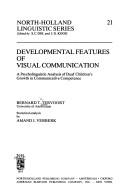
ISBN: 0720424585 0444106782 9786613837950 128352550X 0080954162 9780080954165 9780444106780 072042450X 6613837954 0720424577 0444105239 0720424569 0444104569 0720405076 9780444104564 Year: 1975 Volume: v. 4 Publisher: Amsterdam : North-Holland Pub. Co.,
Abstract | Keywords | Export | Availability | Bookmark
 Loading...
Loading...Choose an application
- Reference Manager
- EndNote
- RefWorks (Direct export to RefWorks)
This book provides a comprehensive introduction to modern global variational theory on fibred spaces. It is based on differentiation and integration theory of differential forms on smooth manifolds, and on the concepts of global analysis and geometry such as jet prolongations of manifolds, mappings, and Lie groups. The book will be invaluable for researchers and PhD students in differential geometry, global analysis, differential equations on manifolds, and mathematical physics, and for the readers who wish to undertake further rigorous study in this broad interdisciplinary field.
Number theory --- 511.6 --- Algebraic number fields --- Class field theory. --- 511.6 Algebraic number fields --- Algebraic number theory --- Complex analysis --- Mathematical potential theory --- Algebraic geometry --- Functions of several complex variables. --- Differential equations, Partial. --- Analytic functions. --- Sports administration --- Surfaces, Cubic --- 512.7 --- 512.7 Algebraic geometry. Commutative rings and algebras --- Algebraic geometry. Commutative rings and algebras --- Surfaces, Cubic. --- Surfaces cubiques --- 517.55 --- 796.062 --- 796.062 Organisatie, management en marketing van sport en recreatie --- Organisatie, management en marketing van sport en recreatie --- Sports --- Management --- Organization and administration --- Géométrie algébrique --- Corps de classe
| Listing 1 - 10 of 14 | << page >> |
Sort by
|

 Search
Search Feedback
Feedback About UniCat
About UniCat  Help
Help News
News